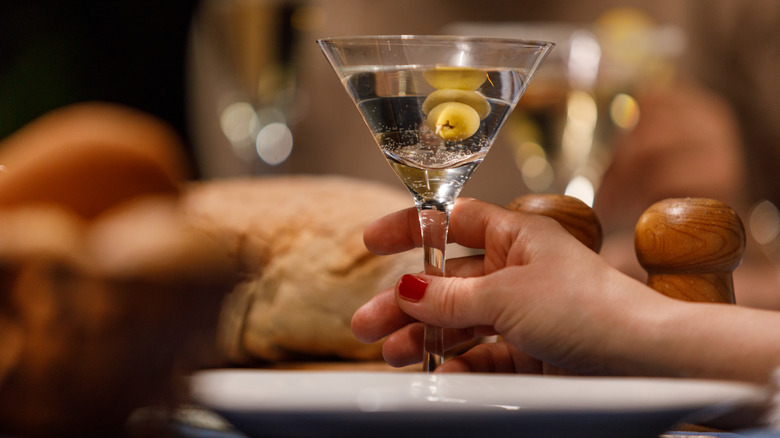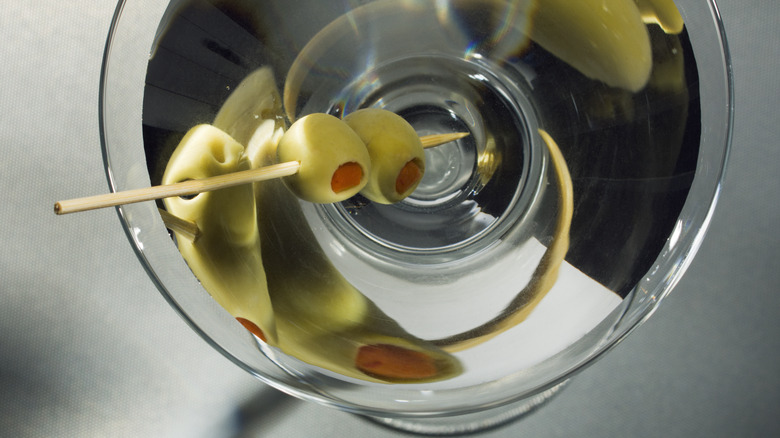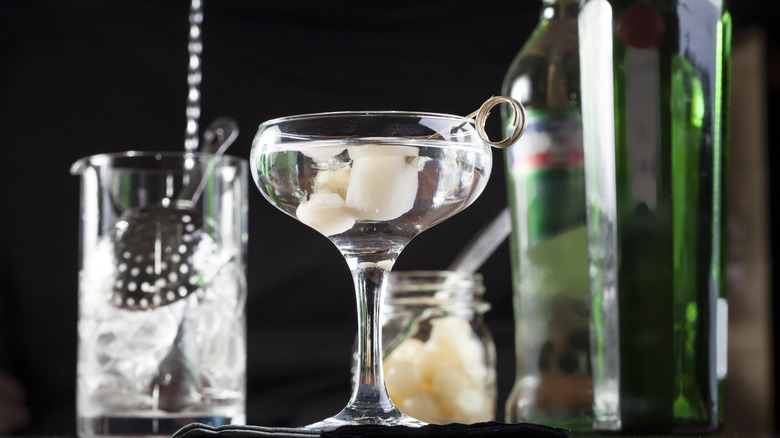What Is A Reverse Martini?
The martini, while always a classic, has achieved a level of ubiquity that is hard to beat. Part of this comes from a generally assumed principle that anything can be a martini, so long as it's served in a V-shaped glass: Think of the espresso martini, the pornstar martini, and the Appletini, which are each about as different from one another as you could get. Chef and food writer Noah Galuten put it best when he wrote, "There are only two essential ingredients in a Martini: One is gin, and the other is vibes."
But there's one category of 'tini that apéritif lovers should definitely give a chance: the reverse martini. This low-ABV cocktail takes the proportions of a martini and reverses them, turning vermouth into the main character while allowing vodka or gin to provide a slim yet punchy foundation for the drink. A reverse martini is the ideal beverage for a low-key evening of drinking that won't leave you with a hangover the next day.
Types of martinis
If you've ever heard someone asking for a dry martini, then you're already somewhat familiar with the lingo and range of the beloved 'tini. Since a classic martini only consists of gin or vodka and vermouth, shifting the amount of one or the other changes the flavor profile of the cocktail considerably. Dry martinis, which often include only a whisper of vermouth, are boozier — while wet martinis usually follow a two-to-one gin-to-vermouth ratio. Dry martinis are more common these days, but wet martinis are closer to the original proportions of a classic martini.
Even wetter than that would be a 50/50 martini, which uses equal parts gin or vodka and vermouth. But the reverse martini takes the ratio all the way to two-to-one — vermouth to gin. These lighter beverages have enjoyed a small cult following in recent years thanks to an apéritif-aperitivo boom that has put fortified aromatized wines and other botanical-heavy drinks like vermouth back in the limelight.
Choosing your spirits
Because a reverse martini is all about the vermouth, its success relies on using high-quality vermouth. Many Americans dislike vermouth, or think that they do, likely because they've only ever had cheap vermouth, or vermouth that hasn't been properly stored. Vermouth needs to be refrigerated after opening, or it will go sour in no time. But quality vermouth can be beautifully floral and herbaceous, and particularly when paired with a good gin, it can bring out complex botanical notes.
Vermouth's name comes from wermut, meaning wormwood, which is the primary botanical in the drink. But it can contain a variety of bitters, like cinchona and gentian. And while dry vermouth is common in martinis, blanc vermouth can also be a beautiful substitution. Halfway between dry vermouth and sweet vermouth, blanc vermouth is slightly sweeter and shines in the spotlight of a reverse martini. Try something like Dolin Blanc or Comoz to explore this style, or push farther into a quinine-based apéritif like Lillet Blanc, Cocchi Americano, or Cap Corse for something truly unforgettable.



